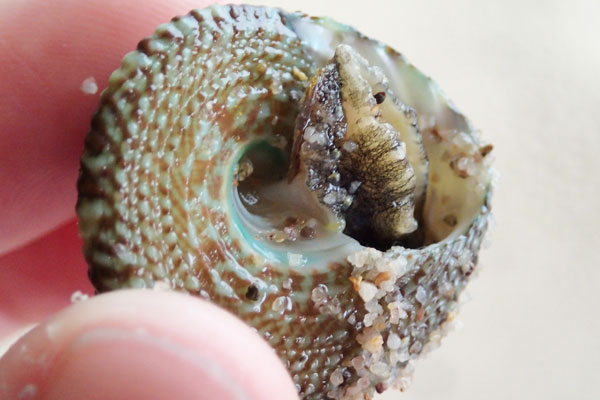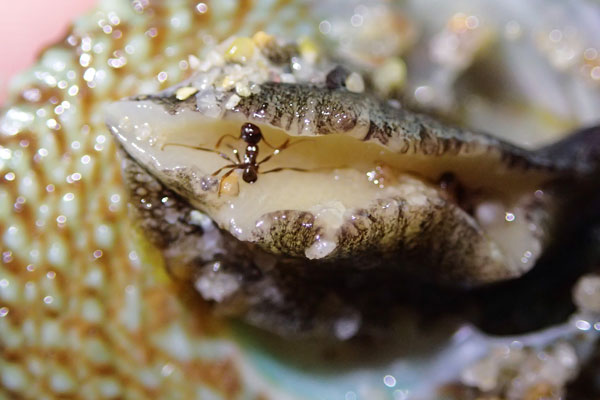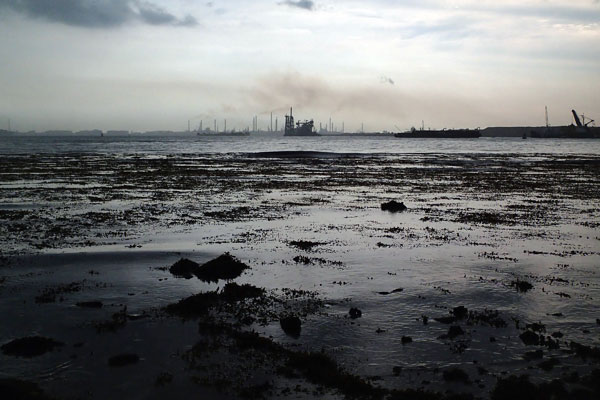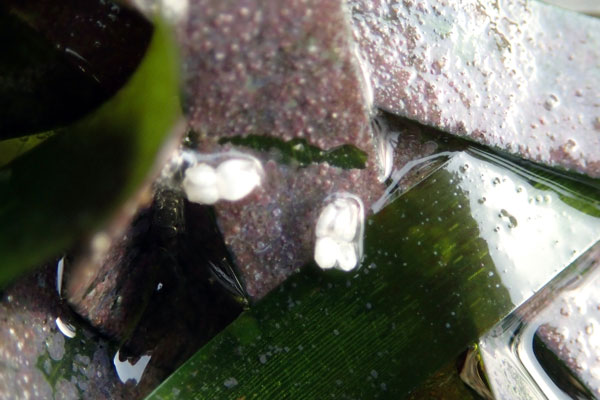It was my second trip to Labrador Beach and I encountered the exact same weather as my first trip:
 |
| Heavy rain |
The purpose of the trip was to help monitor seagrass at Labrador beach. Unfortunately, the clouds moving down from southwest over the southern islands decided so spread across Labrador area. Shortly after we made our way down to the beach, it started to pour. It was after a 45 minute wait, the sky cleared up to a light drizzle.
While waiting under the closed jetty, I decided to try out my newly acquired swimming camera.
Under the jetty pathway, next to the forest edge, there were litters big and small everywhere. Although the beach and jetty at Labrador is closed to public, people were still able to find a way down to the beach.
 |
| Plastic chair left behind recently. |
I tried the macro and super macro modes on my camera on a spotted top shell snail.
 |
| Macro mode of the underside |
 |
| Testing the capabilities of Super Macro mode. |
I started my seagrass monitoring at Site 3, furthest from the from our entrance point, while Ria did Site 1 and 2. Even during our monitoring time, the sky rained again for a short while before a sudden stop.
 |
| After rain view of the shore and the refineries in the distant. |
After completing my monitoring, Ria showed me the male flowers of the Tape seagrass (Enhalus acoroides) which are released from bracts. The male flowers looked like tiny floating styrofoam bits, with one end being hydrophobic.
 |
| Inside of a bract, with male flowers. |
 |
| The bract among the Tape seagrass. |
 |
| 2 male flowers, which will be transported around by the incoming tide. |
By the time we completed the monitoring, we were left with little time to check out the Tape seagrass flowers before the in-coming tide.
It was a very wet monitoring day for Ria and I at Labrador.
So far I am quite satisfied with my new swimming camera, except for its auto white balance. It is not able to produce a similar colour tone for images at the same environment. A slight change in angle changes the colour production of the image. Overall, images come with a more reddish tone.
Read about the monitoring session from TeamSeagrass' blog:
Labrador (11 Jan 2013)







